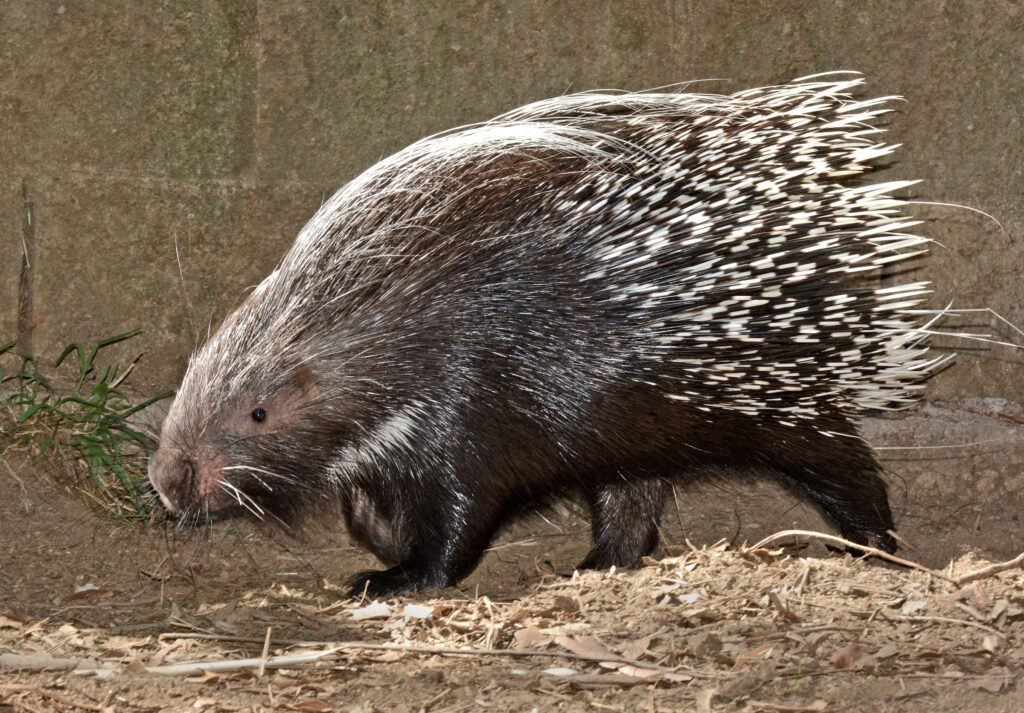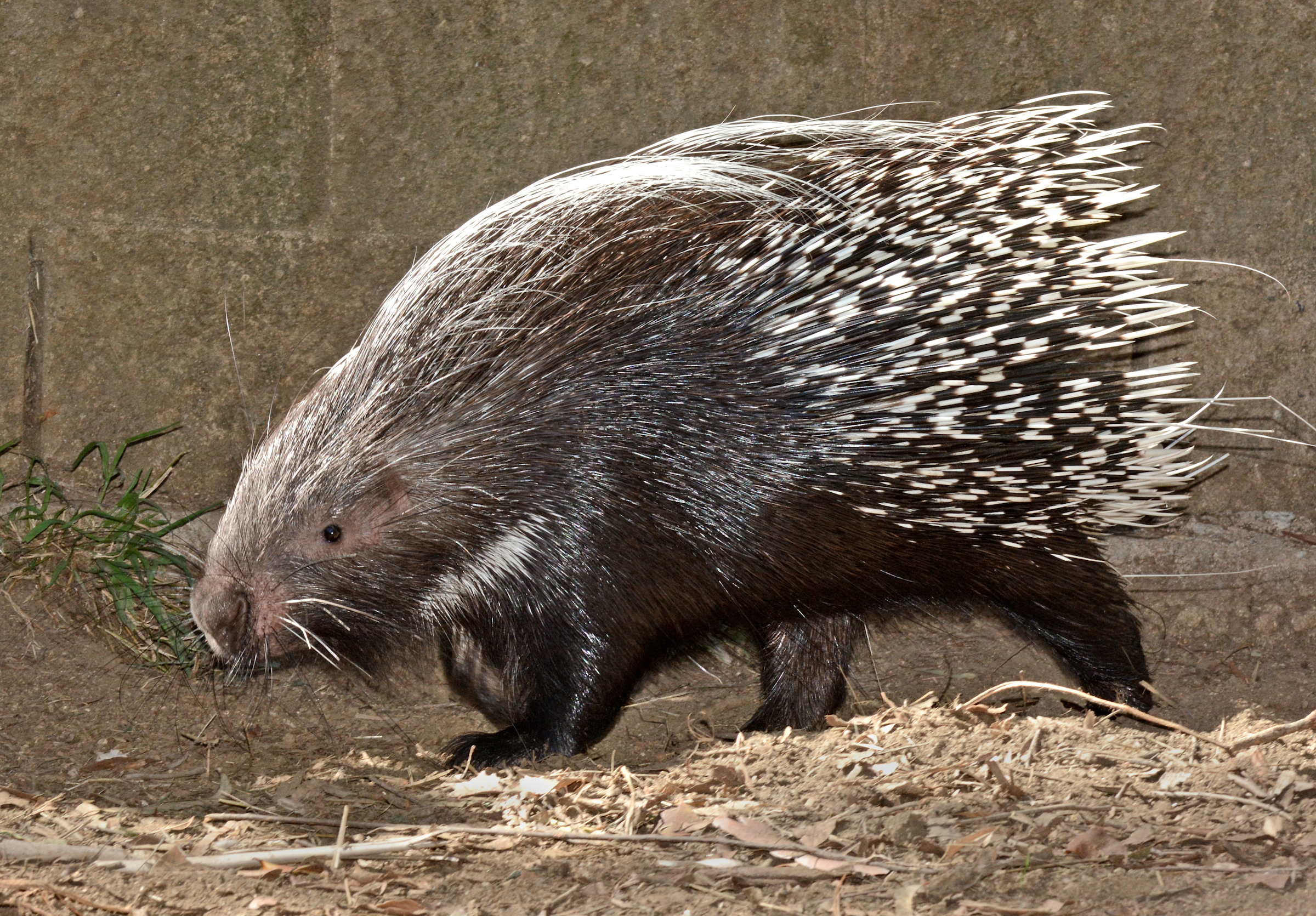About
Cape porcupines have quills that can grow up to 12 inches long—making for an impressive means of defense. When cornered, porcupines raise the quills so as to look larger and more formidable. They produce a hiss-like rattle to remind adversaries what a threat their quills can be. This is all done using a larger version of the same muscles that respond to “hair-raising” situations in humans. If further discouragement is needed, Cape porcupines will spin around and rush backwards to stab with their thicker, shorter quills; they aim for the face. Quills can penetrate flesh and become embedded, causing a wound that can become infected and sometimes fatal. Porcupine puncture wounds have been known to kill lions, leopards, and hyenas. However, most Cape porcupines are shy and nervous, more likely to flee danger by hiding in a hole with quills facing outward than stand their ground against predators.
Cape porcupine quills are thick, stiff modified hairs made of keratin. They grow in clusters of four to six but lack the barbed tips found in North American porcupines. Porcupines cannot shoot their quills, but some quills are loosely attached, and if any are lost, they easily grow back. Usually nocturnal, Cape porcupines shelter during the day in caves, rock crevices, hollow logs, or extensive burrows they themselves dig. They live in adult pairs or in family groups with offspring. Porcupines often gnaw on branches, tree bark, and trunks to help wear down their ever-growing incisor teeth (a feature they share with all of their rodent relatives). They forage on the ground and rarely climb trees.

Habitat
Cape porcupines live in the rocky hills and outcrops across most of central and southern Africa.
Diet
These porcupines are herbivorous, eating bark, roots, tubers, berries, and cultivated crops.
Physical Characteristics
The Cape porcupine’s body length is around 25 to 32 inches with weight ranging from 40 to 60 pounds. Their lifespan in the wild is 12 to 15 years, but in human care, they can live up to 21 years.
LOCATION WITHIN THE ZOO
You’ll find this animal in the Children’s Zoo. See Zoo Map.

